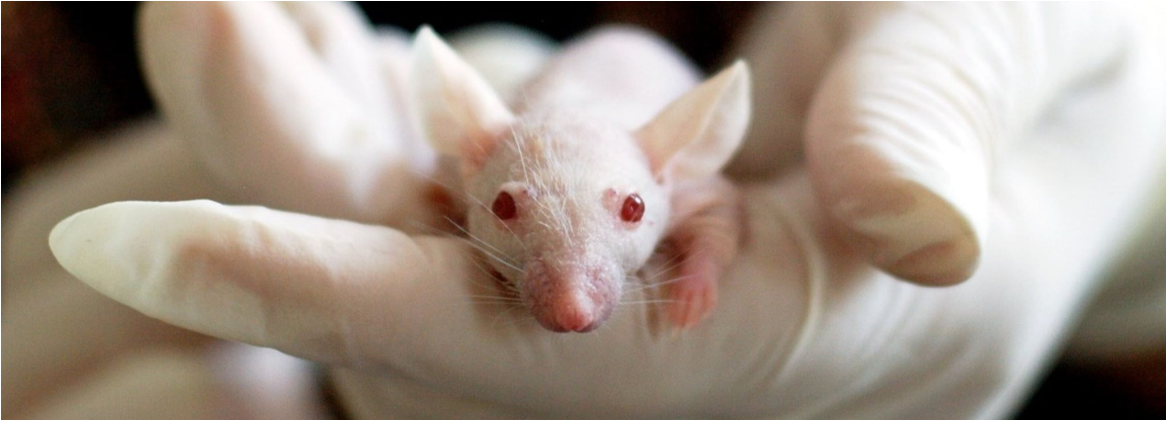- You are here: Home
- Disease Models
- Oncology Models
Disease Models
- Oncology Models
-
Inflammation & Autoimmune Disease Models
- Rheumatoid Arthritis Models
- Glomerulonephritis Models
- Multiple Sclerosis (MS) Models
- Ocular Inflammation Models
- Sjögren's Syndrome Model
- LPS-induced Acute Lung Injury Model
- Peritonitis Models
- Passive Cutaneous Anaphylaxis Model
- Delayed-Type Hypersensitivity (DTH) Models
- Inflammatory Bowel Disease Models
- Systemic Lupus Erythematosus Animal Models
- Asthma Model
- Sepsis Model
- Psoriasis Model
- Atopic Dermatitis (AD) Model
- Scleroderma Model
- Gouty Arthritis Model
- Carrageenan-Induced Air Pouch Synovitis Model
- Carrageenan-Induced Paw Edema Model
- Experimental Autoimmune Myasthenia Gravis (EAMG) Model
-
Cardiovascular Disease Models
- Surgical Models
- Animal Models of Hypertension
- Venous Thrombosis Model
- Atherosclerosis model
- Cardiac Arrhythmia Model
- Hyperlipoidemia Model
- Doxorubicin-induced Heart Failure Model
- Isoproterenol-induced Heart Failure Model
- Arterial Thrombosis Model
- Pulmonary Arterial Hypertension (PAH) Models
- Heart Failure with Preserved Ejection Fraction (HFpEF) Model
-
Neurological Disease Models
- Alzheimer's Disease Modeling and Assays
- Seizure Models
- Parkinson's Disease Models
- Ischemic Stroke Models
- Acute Spinal Cord Injury (ASCI) Model
- Traumatic Brain Injury (TBI) Model
- Hypoxic-Ischemic Encephalopathy (HIE) Model
- Tourette Syndrome (TS) Model
- Amyotrophic Lateral Sclerosis (ALS) Model
- Huntington's Disease (HD) Model
- Intracerebral hemorrhage (ICH) Models
- Pain Models
- Metabolic Disease Models
- Liver Disease Models
- Rare Disease Models
- Respiratory Disease Models
- Digestive Disease Models
-
Urology Disease Models
- Cisplatin-induced Nephrotoxicity Model
- Unilateral Ureteral Obstruction Model
- 5/6 Nephrectomy Model
- Renal Ischemia-Reperfusion Injury (RIRI) Model
- Diabetic Nephropathy (DN) Models
- Passive Heymann Nephritis (PHN) Model
- Adenine-Induced Chronic Kidney Disease (CKD) Model
- Kidney Stone Model
- Doxorubicin-Induced Nephropathy Model
- Orthopedic Disease Models
- Ocular Disease Models
- Skin Disease Models
- Infectious Disease Models
Oncology Models

The animal models of human diseases are animal experimental objects and materials established in biomedical scientific research with the mimicry of human diseases. The use of animal models is an important experimental method and means in modern biomedical research, which helps to more conveniently and effectively understand the occurrence, development, and prevention measures of human diseases.
Similarly, animal models have revealed insights into tumor initiation, development, and metastasis, and are increasingly important tools for understanding cancer biology. Animal models are also useful in a variety of other cancer studies, such as the involvement of environmental factors in tumor formation.
Over the past 30 years, extensive research has led to the development of powerful animal (most are mice) models of cancer. These models are key tools for current and future cancer research. They allow both the study of normal and abnormal gene interactions in tumors and the reproduction of human disease in mice, providing a key resource for research in chemoprevention and for the development and testing of novel cancer therapies.
Our Oncology Models
- Cell line-derived xenograft (CDX) models
- Patient-derived xenograft (PDX) models
- Syngeneic and orthotopic models
- Gene-edited animal models
- Chemically induced animal models
- Induced colorectal cancer model
- Induced liver cancer model
- Induced breast cancer model
- Induced prostate cancer model
- Syngeneic Mouse Models
- Orthotopic Models
- High Stromal Tumor Models
- Metastasis Models
- Humanized Mouse Models
- Cancer Vaccine Evaluation
- Radiotherapy-Related Disease Models
Other services following Oncology Model building
Creative Bioarray provides comprehensive pharmacology and pharmacodynamics, toxicology, safety evaluation, pharmacokinetics and toxicokinetics services in addition to a wealth of oncology models.
We provide highly customizable services
- Customized animal feeding
- Customized samples collecting
- Biomarker analysis
- Detection of multiple proteins and cytokines
- RNA detection and analysis
- High-throughput sequencing analysis
- Pathology testing
- Immunohistochemistry
- …
Study example
 Figure 1 Examples of animal models. A. CDX breast cancer model. B. Colorectal cancer model induced by AOM/DSS (Zhao, et al., 2017; Lee, et al., 2016).
Figure 1 Examples of animal models. A. CDX breast cancer model. B. Colorectal cancer model induced by AOM/DSS (Zhao, et al., 2017; Lee, et al., 2016).
Quotation and ordering
We have extensive experience in developing disease models based on scientific publications. To discuss any of these models further or to discuss the possibility of developing alternative models, please do not hesitate to contact us.
References
- Zhao, Xiaolei, et al. "Spectrum of spontaneous photon emission as a promising biophysical indicator for breast cancer research." scientific reports 7.1 (2017): 1-12.
- Lee, Sun Min, et al. "The effect of sex on the azoxymethane/dextran sulfate sodium-treated mice model of colon cancer." Journal of cancer prevention 21.4 (2016): 271.
For research use only. Not for any other purpose.

